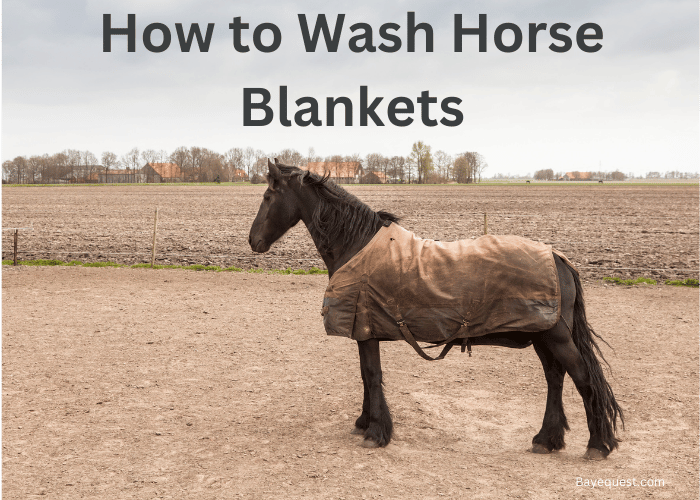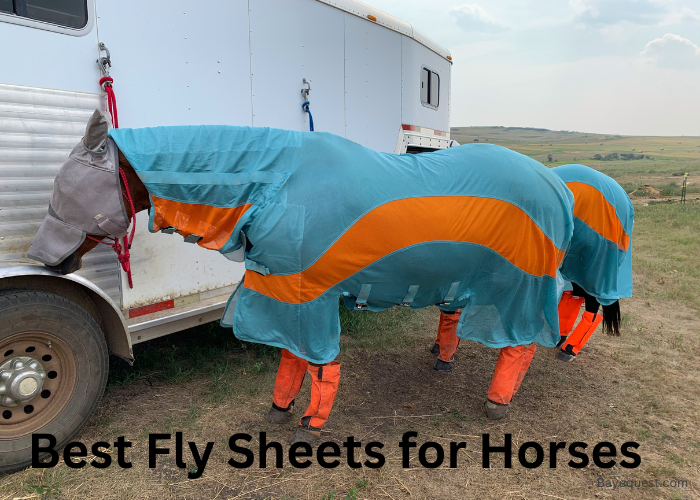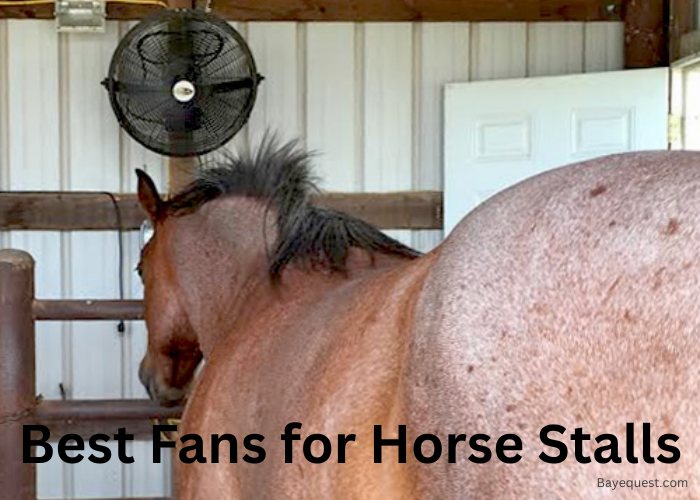Did you know improperly washed horse blankets can harbor harmful bacteria? As an equestrian expert, I’ve seen the effects of neglecting proper blanket care. Your horse deserves clean, comfortable gear, and so do you.
In this guide, I’ll show you how to wash horse blankets effectively, ensuring they remain fresh and durable. We’ll cover the best cleaning, drying, and maintenance tips.
Ready to give your horse the clean comfort they need? Let’s get started.
Key Takeaways: Horse Blanket Cleaning
To clean horse blankets, use a washing machine. Place the blanket in a mesh laundry bag to keep straps and buckles secure. Select a gentle cycle with cold water and use an equine blanket wash. Avoid fabric softeners to maintain the waterproof coating and integrity of the blanket.
Identifying When to Clean Horse Blankets
When caring for our equine friends, keeping their blankets clean is a big part of the picture. You might wonder, “When is it really time to wash those blankets?”
Well, a few tell-tale signs shout out for a wash. If you catch a whiff of something a bit off when you’re close to your horse’s blanket or see that it’s lost its original color to mud and grime, it’s time.
Dirt, sweat, and the great outdoors can leave their marks, which are your cues to get cleaning.
Not all horse blankets are made the same, meaning they don’t all head to the wash the same way.
We’ve got turnout blankets, those sturdy shields against the elements when your horse is out and about. These guys often need a good cleaning more frequently because they’re usually on the front lines.
Then, there are stable blankets, a bit like your horse’s cosy indoor wear. These might not get as visibly dirty as turnout blankets, but don’t let that fool you. They can accumulate sweat, hair, and dust, so they still need a regular check-in with the washing machine.
Let’s not forget about coolers. These blankets are designed to wick away moisture and help your horse cool down after a workout without catching a chill. However, they gather sweat and can become smelly if not cleaned regularly.
Each type of blanket has its own washing needs based on its fabric and design. The key is to know your blanket and what it’s been through. Then, you’ll know when it’s time for a wash and how to go about it.
Preparing to Wash Horse Blankets
Before you toss that horse blanket into the wash, there’s a bit of prep work that’ll make all the difference. Think of it like prepping your kitchen before cooking a big meal. The cleaner your starting point, the better the results.
First off, shake out that blanket. You’ll be amazed at what comes out. Dust, dirt, hay – you name it. This step helps big time because it means less grime in your washing machine.
Next, grab a brush and give the blanket a good once-over. This isn’t just about getting more dirt off. It’s about getting rid of all that loose horse hair. The stuff that seems to weave itself into the fabric.
Here’s a step you won’t want to skip: checking the manufacturer’s label. It’s like the secret recipe for keeping your blanket in top shape.
That little tag tucked away on the edge? It’s gold. It’ll tell you everything from the right water temperature to whether or not a spin in the machine is a good idea. Some blankets prefer a little handwash action instead.
Choosing the right detergent is like picking the right tool for a job. You want something gentle and horse-friendly. Harsh chemicals? No thanks.
We’re looking for a mild detergent to clean without irritating your horse’s skin. Get an equine blanket wash designed to tackle all unique challenges.
So, with the dirt brushed off, the care label checked, and the right detergent in hand, you’re all set to get that blanket looking and smelling like new again.
Read also: Shaving vs straw horse bedding.
How to Wash Horse Blankets
No matter your method, the goal is the same: a clean, comfortable blanket ready for its next adventure. Each has its perks, so choose what works for you and your setup.
Option 1: Machine washing
Finding the right machine. Not just any machine will do when it comes to horse blankets. You’ll need something with a bit of muscle. Usually, a large-capacity washer is your best bet. If your home machine looks like it might throw in the towel at the sight of a horse blanket, consider a trip to the local laundromat. They often have the heavy-duty machines you’ll need.
Setting the scene. Once you’ve got your machine, it’s all about the settings. Cold water is your friend here, especially for blankets with waterproofing. It’s gentler on the fabric and preserves those protective qualities. As for the cycle, think “gentle” or “delicate.” This isn’t the time for an intense spin that could damage your blanket.
Detergent dosage. Less is more with detergent. Use a mild, horse-friendly option and stick to about half of what you’d use for a regular load. Too much soap can leave residue, which is bad for your horse’s skin.
Option 2: Hand washing
Soak. Fill a large tub or a clean wheelbarrow with cold water and add a little of that mild detergent. Submerge the blanket, letting it soak for a good 15 minutes to loosen up the dirt.
Scrub. Using a soft brush or a sponge, gently scrub the blanket. Pay extra attention to those dirty spots, but remember, we’re cleaning, not painting a masterpiece, so gentle is the way.
Rinse. This is crucial. Rinse the blanket with clean, cold water to remove all the soap and leave the fabric as fresh as possible.
Option 3: Pressure washing
This method might sound a bit out there, but it’s a game-changer if done right. Here’s how:
Set up. Hang the blanket over a sturdy fence or similar setup outdoors.
The right pressure. Keep the pressure washer on a lower setting to avoid damaging the fabric. Start from the top and work your way down, keeping the nozzle far from the blanket.
Rinse and repeat. After you’ve given it a thorough once-over, turn the blanket over and do the other side.
How to Dry Horse Blankets
Drying horse blankets properly is as crucial as washing them correctly. Doing it right extends the blanket’s life and ensures it remains comfortable and safe for your horse.
Let’s walk through how to dry those blankets without any hassle.
Air drying
Air drying is your best bet for most horse blankets. It’s gentle and effective and helps maintain the integrity of the fabric, especially for waterproof or breathable materials.
Choose a well-ventilated area out of direct sunlight. Sunlight can fade colors and break down fabrics over time. A breezy, shaded spot does wonders.
Hang the blanket over a fence, a clothesline, or a suitable drying rack. Spread it out to encourage even drying and prevent musty smells from developing in the folds.
Halfway through drying, flip it to ensure both sides dry evenly. This is especially important for thicker blankets that might retain moisture in their padding.
Tumble Drying
Some horse blankets can handle the tumble dryer, but this method has a few caveats.
Before thinking about the dryer, check the manufacturer’s instructions. If it says “tumble dry low,” you’re good to go—anything else, and you’re better off avoiding the risk.
High heat can shrink or damage the blanket. Stick to a low heat setting and monitor the drying process. You might want to remove the blanket while it’s still slightly damp to air dry the rest of the way.
Special tips
Never try to speed up the drying process with direct heat sources like heaters or hair dryers. This can damage the blanket’s fabric and compromise any waterproofing treatments.
For those extra-fluffy or padded blankets, you might need to shake them now and then as they air dry. This helps distribute the filling evenly.
How to Store Horse Blankets
Storing horse blankets properly is the final step in ensuring they’re ready to go when the season changes or you need a clean one.
Here’s a simple guide to store those blankets so they remain in the best condition, free from damage and ready for when your horse needs them again.
- Always store blankets clean
- Make sure the blanket is completely dry before storing.
- Consider using fabric or mesh storage bags specifically designed for horse blankets. These allow air to circulate, preventing mold and mildew.
- If you have multiple blankets, label them clearly. This step will save you time and hassle when looking for a specific blanket.
- Store blankets in a cool, dry place away from pests.
- Try not to pile too many heavy items on top of stored blankets.
- Even in storage, checking on your blankets occasionally is a good idea. Look for any signs of pest infestation or moisture, or just air them out.
- Before storing, do a quick check for any damage.
How to Maintain Horse Blankets Between Washes
Maintaining horse blankets between washes is key to extending their lifespan and ensuring they remain comfortable and safe for your horse to wear. Here’s how you can keep them in tip-top shape without constantly running the washing machine.
- Spot cleaning
- Air out regularly
- Brush off loose dirt and hair
- Check for damage
- Rotate blankets
- Store properly when not in use
- Use blanket liners
- Avoid over-washing
Common Mistakes to Avoid When Washing Horse Blankets in Washing Machine
Cleaning horse blankets might seem straightforward, but a few common pitfalls can lead to unnecessary wear and tear or damage. Here’s a rundown of mistakes to avoid:
- Overloading the washing machine
- Using harsh detergents
- Ignoring the manufacturer’s instructions
- Forgetting to fasten straps
- Inadequate rinsing
- Incorrect drying methods
- Neglecting pre-cleaning
- Delaying cleaning after heavy use
FAQs
Can you put horse blankets in the dryer?
Yes, but with caution. Check the manufacturer’s instructions first. If it says the blanket is dryer-safe, use a low heat setting and remove it while it’s still slightly damp to air dry the rest. High heat can damage the fabric, shrink the blanket, or ruin waterproofing treatments.
How do you dry a horse blanket in the winter?
Drying horse blankets during the winter presents its own set of challenges. However, a few strategies can make this task more manageable. First, opting for indoor drying in a well-ventilated area can be effective. You can also enhance air circulation around the blanket with fans to expedite drying. Portable drying racks offer a versatile solution, allowing you to relocate the blanket to the warmest and driest areas within your home or barn.
What’s the best detergent for horse blankets?
The best detergent for horse blankets is mild, non-biological, horse-friendly, and environmentally safe. Look for detergents labelled as suitable for sensitive skin or those designed for horse blankets. These will clean effectively without damaging the fabric or leaving residues that could irritate your horse’s skin.
How do you get the smell out of horse blankets?
Start with a good wash using soap to eliminate bad smells from horse blankets. Sometimes, you might need an extra rinse to remove all the soap. Adding a cup of white vinegar during the rinse can help remove strong odors, as vinegar is a natural deodorizer. If you can, let the blanket dry outside to benefit from the smell-fighting power of the sun and fresh air. For really stubborn smells, sprinkle baking soda on the dry blanket and let it sit for a few hours before shaking it off and washing again. Baking soda, like vinegar, helps neutralize bad odors, making the blanket smell fresh.
Cleaning Horse Blankets Conclusion
In summary, the key to a happy horse and a well-maintained blanket lies in regular care and attention, including recognizing when it’s time for a wash, choosing the right drying technique, and understanding the importance of proper storage.
Remember, a clean, dry, and well-stored blanket ensures your horse’s comfort and prolongs the blanket’s life. By avoiding common cleaning mistakes and incorporating simple maintenance tips between washes, you can safeguard your investment and ensure your horse remains comfortable throughout the seasons.
Here’s to embracing these practices for our equine friends’ well-being and their blankets’ longevity.








